Your House review
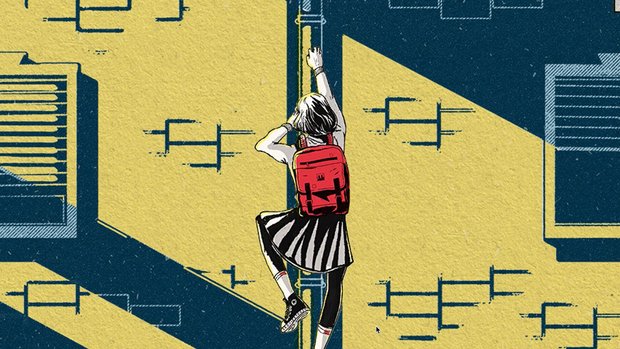
- 2 Comments
Fans of Unmemory will feel right at home with its prequel’s welcome return to the familiar book/game formula
When I saw Your House had been released, I jumped at the chance to play it. I have been a fan of Spanish developer Patrones & Escondites since their first game, Unmemory, back in 2020, and this one promised to be done in the same style. (Full disclaimer: I was a tester of their game Delete After Reading but had nothing to do with Your House.) I originally became aware of Unmemory on an adventure gaming Discord, where the developers were asking whether their description of it was something people could understand: ‘a game you can read and a book you can play.’ This piqued my interest; what could it mean?
More than a standard visual novel, it feels like an impossible task to fully describe what Patrones & Escondites have created because it is so unique. Imagine a text adventure from the 90s, where you read the text on a page and then type an action at the end like ‘take key.’ But instead of typing, a picture of the key itself is on the page and is clickable. Do so and the key falls in front of your eyes, knocking over a coffee cup, and the text, story and visuals change instantly to reflect the action you just took. We’ve seen something a bit similar in Cing’s 2007 Nintendo DS cult hit Hotel Dusk, but Patrones & Escondites have expanded on it by blending immersive fiction and gameplay, borrowing ideas from Choose Your Own Adventure books and utilising sound and music to elevate the experience.
Your House doesn’t deviate from its predecessor's approach, and in fact serves as a prequel to Unmemory. The plot is an intriguing puzzle story, but it also touches on contemporary topics such as feeling uncomfortable as a younger person, fractured family relationships, gender stereotypes and the roles women play. These themes, and the innovative way they are presented, make this another enjoyable and solid narrative-driven experience. For fellow fans of this developer, it’s more in line with a young adult novel than Unmemory, but more mature than the whimsical Delete After Reading, which I felt was aimed more at a family-friendly audience.
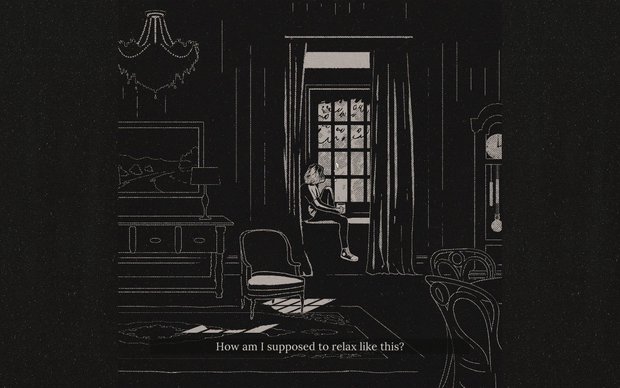
We begin our story as Debbie, a young woman on her eighteenth birthday who finds out that her boyfriend has been cheating on her with her best friend. After pouring a pint of beer over them, she takes off on her motorbike and gets into an accident. Adding to her troubles, Debbie has been expelled from her boarding school for various rebellious reasons, her relationship with her father is strained, and her mother passed away when Debbie was very young. In a slightly happier but certainly more mysterious turn of events, a postcard has just arrived with a key wishing her ‘Happy Birthday.’
After the day she’s had, Debbie throws caution to the wind and steals a different motorbike to travel across the city to the address on the postcard. She arrives at the large and imposing house, inspired by a real-life Manhattan apartment designed by architect Eric Clough, and it’s here that our story opens up. The initial part of the tale is heavy on exposition and quite light on puzzles but absolutely drips with noir-style storytelling. Though the game is set in contemporary times, the chapter ends with us looking out of a window at a shadowy figure on a dark street underneath the light of a lamppost, like something straight out of a 1940s detective novel.
There aren’t any manual save points while playing Your House, but returning to the game after quitting will put you back to the start of the page you were on, or you can completely reset the chapter and start afresh. There are five chapters in total, which can be revisited by clicking an opened door graphic displayed once a chapter has been completed. Here you can also watch any ‘interludes’ again, which are neat video recaps of what you’ve learned in their respective chapters and teasing more of the plot for the next one. These cutscenes are recorded on a cassette tape (complete with crackly playback), and they’re an enjoyable way to serve as a reminder if you’ve stepped away from the game for a while and need a refresher.
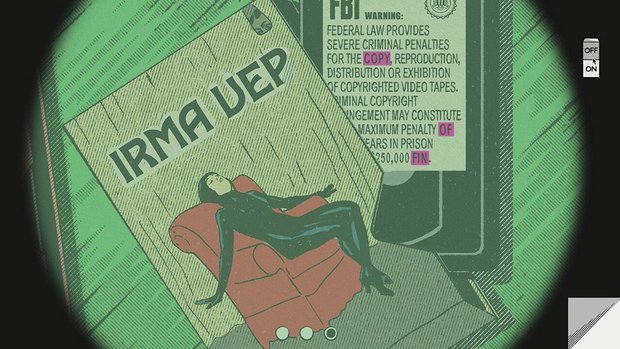
A lot of the plot information and major story beats are conveyed through these interludes rather than in the book itself, which focuses more on puzzles without adding many new main plot details. Unfortunately the balance feels off, as sometimes an interlude would surprise me with new information not alluded to in the previous chapter, so much so that when a new character was introduced it completely threw me off and I wondered if I had I missed something. I would have preferred there to be more connective narrative tissue running through the book pages because without it the story sometimes feels more rushed than it needs to be.
Visually Your House is presented like an interactive novel, with text and pictures on a page that can be scrolled to the bottom before advancing to the next, but gameplay-wise it progresses similarly to an escape room. We have an overarching question such as ‘Whose house is this?’ but as we advance from room to room, we can see that things are not quite as they seem. For example, opening a closet might reveal clothes that aren’t Debbie’s but are in her style and size, and throughout the house you'll find many locked doors, suspiciously placed portraits, and a pair of shoes with what appear to have a radio frequency stamped on them. A keen eye will spot lots of details that look like they may be key to unravelling the mystery.
Anything significant mentioned in the text is highlighted in bold, italics, or is underlined, which can be clicked to either add more to the story, or allow us to collect an item. If we don’t have an object needed to progress, the word is greyed out and not clickable, which is an effective prompt to indicate there’s more to do. Some important objects have their own interactive picture that appears after the text. Clicking on the image allows us to explore the item or scene close up and discover more clues or find a solution to move the story along. That’s not all we can interact with either: sometimes even the small illustrations in page headings are part of a puzzle, which I found very clever (and a little bit sneaky!).
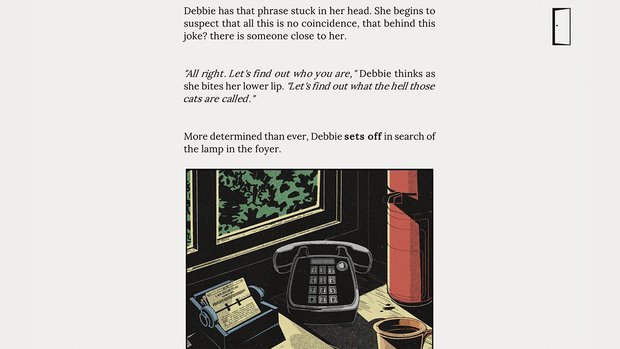
Our first snappy interaction comes when Debbie tries to sleep, and the top and bottom of the screen close in like her eyes are shutting, capturing the drooping, slow blinks of exhaustion. It’s clear that sleep will not come easily, though, so to continue we must open Debbie’s eyes, swiping the top and bottom simultaneously on a touchscreen – or dragging the bottom part of the screen down using a standard mouse click and drag – to continue her tale. Another example of how the game utilises perspective comes when we find ourselves walking down a long tunnel by scrolling the page right as the tunnel narrows, displayed in a mid-page interactive image. A very fun part has us putting on night vision goggles, revealing more on a page than we were able to see before. There’s no other way to describe unconventional moments like these than stylish, and Your House has them in droves.
The text style itself is minimalistic, as one might expect in a book. The background is bright white and the text is dark by default, but there are some accessibility options that change the size and font style to make it more legible if required. The cutscenes are fully subtitled but presented with clear and well-delivered voice acting. The interactive audio puzzles are also subtitled, which is very helpful. I found that the subtitles move a little bit faster than the voices, so they don’t match as accurately as they could have, but it isn’t troublesome.
Progress usually occurs in a linear fashion through a scene, so that the solution of a puzzle gives you a clue or item to use in the next one. This works well within the book framework, instead of there being multiple puzzles going on at the same time. There’s no traditional inventory or journal, so many of the clues need to be memorized or recorded manually, or you can travel back to recheck if needed – I recommend taking notes! I only found myself going back a few times to check specific scenes to piece an answer together. It’s very simple to scroll back up the page, allowing us to navigate to a different location to check a clue, then go back to the page needing the solution.
Many of the puzzles are standard fare: find an item, item has a clue on it, use the clue for the thing it hints at. For example, an answering message mentions cats, so we navigate to the location where we know the cats are, which adds information that will allow us to solve the next puzzle. In certain sections of the book, you can ‘remove’ physical items such as a key or pliers (by clicking on the word or a hand icon, displayed when such an object is visually depicted). The item is inevitably needed on the next page or so, and the action to use it is printed in bold, such as ‘this lock needs a key to open it.’
There are a few timed puzzles throughout the game too, which work by clicking when told to by the book. At one point in our story, Debbie needs to throw an item or two at an intruder. The item is displayed on-screen and the word "HERE" bounces around the screen and we must click on it before the word moves again to a different position. Take too long and the segment is failed, starting the sequence again. These are admittedly easy, but they’re fun and a nice way to break up the reading.
For the most part I found the puzzles very straightforward. Even the timed segments are forgiving and easily reset if a prompt is missed, which really reduces the potential for frustration. Some scenarios I thought were going to be more of a puzzle than they were, such as moving across different rooms in the house and then being told that Debbie must retrace her steps. I was mentally preparing myself to do things in reverse, but it turned out to be as simple as pressing the word ‘retrace’ to get Debbie back to where she needed to be.
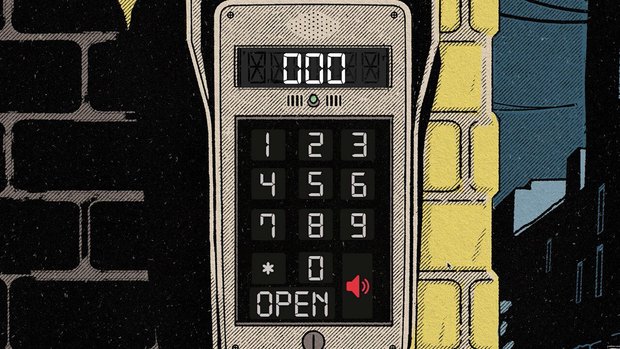
The overall lack of difficulty wasn’t a detriment for me, because I enjoyed briskly moving through the story. This speaks to how well-paced the narrative feels, but puzzle fans may prefer a harder challenge. It's not all easy, however, as Your House throws some logic and creative-thinking puzzles into the mix as well. A couple had me thinking laterally and trying different things, such as a timed challenge with a lampshade, trying to put the correct numbers of symbols under a huge portrait based on an assortment of books, and a key that needs to be constructed accurately using a reference wall of jars. One of them completely stumped me until I asked a friend, who approached it from a different angle that I had not considered, convinced I was doing it the right way.
If you do need help, there is a hint system in place that I used a couple of times, accessed by pressing the door icon in the top right of the screen. The hint mechanic provides a series of clues, and for most puzzles it has a staged approach. Hint 1 is usually vague, hint 2 is more direct, and on a few occasions there is a hint 3 that all but hits you over the head with it, stopping just short of giving you the solution. Strangely, for one puzzle involving the telephone, the final clue seemed misleading to the point that I questioned whether it was a mistake in translation or whether it was done on purpose.
I spent about five hours with this game, but that included 30 or so minutes trying to get past a bugged puzzle that wouldn’t accept my correct input to trigger its completion. Thankfully, a simple restart of the chapter ended up fixing it immediately. I played on the Steam Deck, as all of Patrones & Escondites' games are available to play on mobile, so I figured the Steam Deck would be a natural and comfortable way to play. And I was right, as the scroll function, on-screen actions and input worked flawlessly. The viewing area on larger screens is centred in the middle, with large black borders to either side.
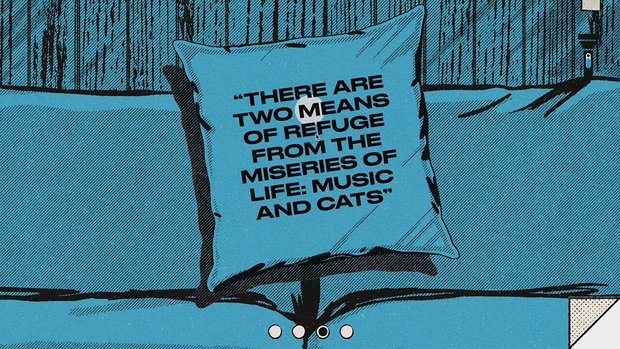
In between all the book text, Your House has a beautiful comic book graphic style. The cutscenes and interludes are black and white, whereas the interactive parts and puzzles are in colour, which strikes an interesting contrast. During the parts where we change locations, a short overhead animation plays, showing Debbie running to another part of the house. This is utilised a lot, but it’s a charming way to display that we are moving ahead or back to a different page of the book. Navigation can seem a little clunky, however, which is one of the limitations of moving through a book, as only certain locations allow passage to other places. For example, you can’t move directly from the kitchen to the bathroom in the book; you first must find the text that allows you to move out into the hallway, then up the stairs, then the bedroom, then the bathroom. Each transition plays the same ‘Debbie running animation’ and the whole process feels a bit awkward and time-consuming when needing to backtrack.
Sounds are utilised purposefully here, such as a shower running before stopping with a squeak when we click the text that says ‘off.’ As we read that a door buzzer is being pressed relentlessly, we can hear it in the background until we go to investigate. The stereo plays loudly in the living room, until we click the picture of it in the middle of the page to turn it off. Effects are context-based and the book allows appropriate reading time before the sounds activate, rather than beginning all at once at the start of a page or overlapping as you move around. This is so fun and immersive, and the way it is implemented is not intrusive or jarring and adds so much to the reading segments. The music is very fitting, swinging from pop rock in the earlier chapters to something a lot more mysterious later on. The final chapter starts off pensive but eases into a more swelling, optimistic score as we make our way toward discovering the final secrets. A short musical sting is heard whenever something pertinent or important is uncovered, which is a nifty choice and very apt in a mystery setting.
Of course, no matter how good the presentation, the success of any book, interactive or not, depends on the quality of the story, and I found the one in Your House very engaging. When presented with a free large house full of puzzles, you might wonder why Debbie just accepts it, but it’s not hard to imagine a young person with a difficult background feeling so lost and out of place that she faces her new situation with stoic curiosity, feeling she doesn’t have anything to lose. It soon becomes clear that this place is meant to test her detective skills and ultimately find out why it has been given to her. A comforting voice speaks to Debbie via her cassette player the more she discovers, revealing new details about the previous owner and her connection to Debbie. I became so caught up in it that I almost forgot about the threat of Debbie’s father coming to find her, as alluded to in the early chapters.
A particular focus is on the traditional roles women have often been required to play – the mother and the homemaker – something that Debbie feels completely at odds with. I found myself feeling sorry for but understanding the plight of Debbie and the mysterious former owner, as well as intrigued about how it was all going to fit together. Your House is fundamentally about personal identity, but also about the pursuit of freedom and authenticity, rather than being pigeonholed by society and expectation. I loved the theme of rebellion throughout the story, and all of the themes are well-written and sensitively handled.
If I have one complaint, it’s that there appears to be an element of choice with a couple of multiple choice text dialogues near the start of the game, but this proves to be an illusion as they inevitably lead you to the same place with no added puzzles or items, which seems a bit redundant. Without spoiling anything, there are a few minor twists in the tale and one big one that had me smiling at the screen when I was done. The ending felt like a fitting finale to the mystery, with a different outcome for Debbie than I initially thought. That being said, with all of her complicated feelings and desire for artistic expression, it makes perfect sense that Debbie will go on to reappear in Unmemory’s story of the Killer Kittens art collective.
Final Verdict
Fans of Unmemory may find the storytelling here isn’t as mature, as Your House is aimed at more of a YA audience, and if you’re looking for a head-scratching puzzle-heavy experience, the obstacles here may not be challenging enough to satisfy. However, the polished comic book art style and unique interactive storytelling combine to provide another well-executed, charming and stylish noir mystery that any visual novel fan should enjoy, with lots of ‘ah-ha!’ moments neatly packaged into its relatively short runtime.
Hot take
With Your House, Patrones & Escondites return to their unique style of interactive storytelling with a prequel to Unmemory, offering another intriguing combination of book-style text and visuals in a thoughtful tale of drama and mystery.
Pros
- Unique style of interactive storytelling
- Strong comic book visual presentation
- Plot is interesting and well-paced
Cons
- Puzzles are on the easier side
- Main story beats feel a bit rushed and confusing
- Navigation can be frustrating at times
Victoria played Your House on PC via Steam Deck using a review code provided by the game's publisher.


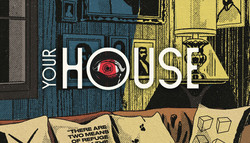
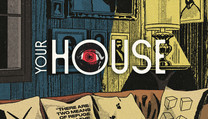




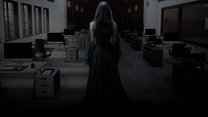


2 Comments
Want to join the discussion? Leave a comment as guest, sign in or register.
I am glad you mentioned the annoying walking across the floor cutscene that plays over and over and over while you navigate. I enjoyed these games and these devs but my god they needed a simple map.
Reply
I’ve never played these games before but this review intrigues me, so they’re going on my wishlist!
Reply
Leave a comment